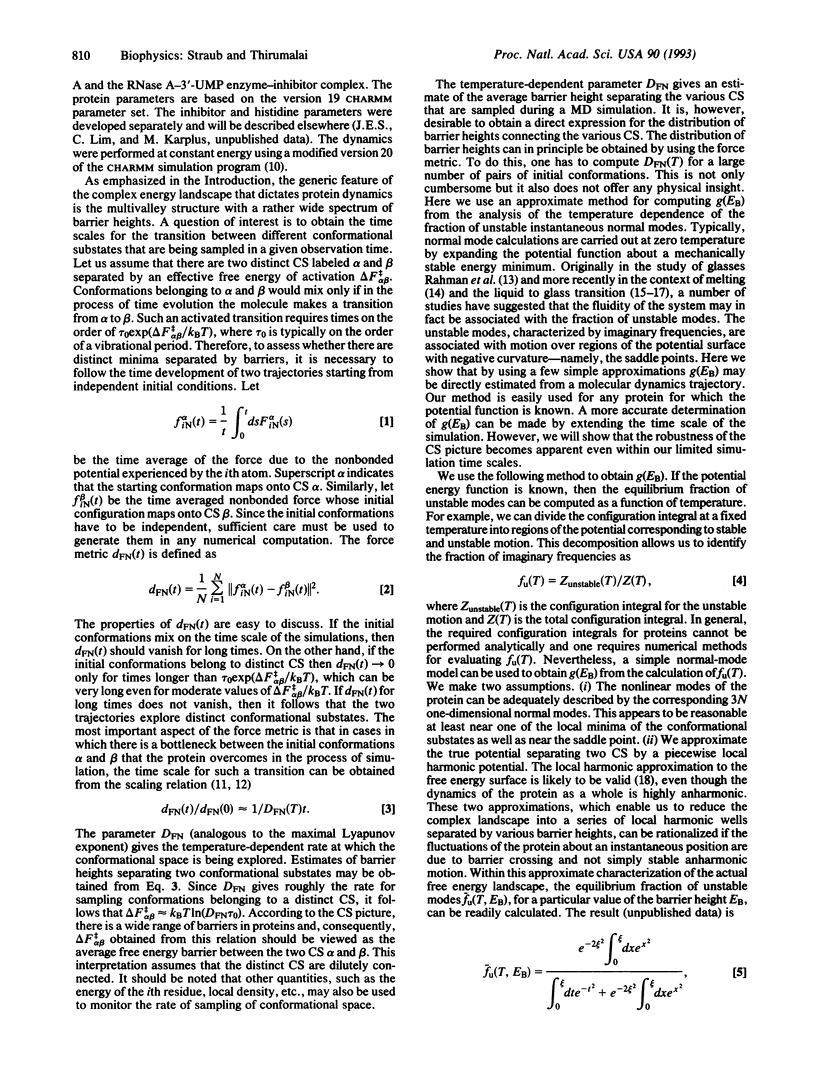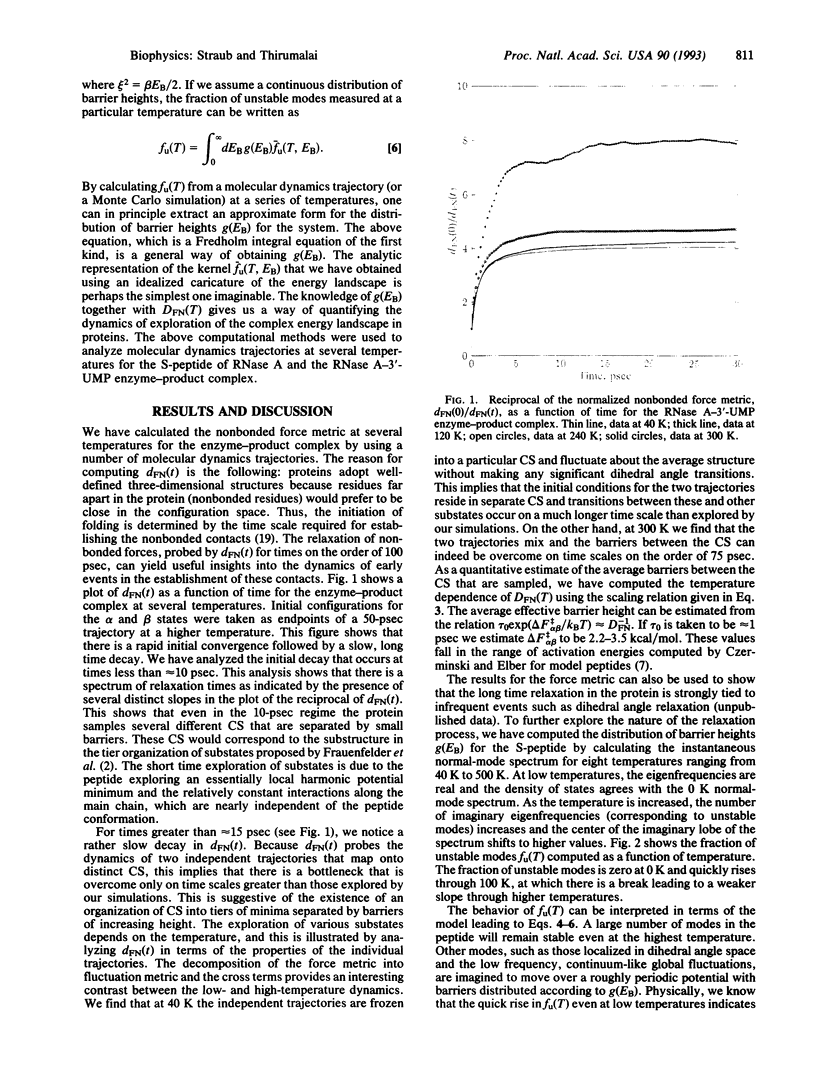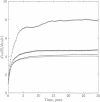Abstract
We present two methods to probe the energy landscape and motions of proteins in the context of molecular dynamics simulations of the helix-forming S-peptide of RNase A and the RNase A-3'-UMP enzyme-product complex. The first method uses the generalized ergodic measure to compute the rate of conformational space sampling. Using the dynamics of nonbonded forces as a means of probing the time scale for ergodicity to be obtained, we argue that even in a relatively short time (< 10 psec) several different conformational substrates are sampled. At longer times, barriers on the order of a few kcal/mol (1 cal = 4.184 J) are involved in the large-scale motion of proteins. We also present an approximate method for evaluating the distribution of barrier heights g(EB) using the instantaneous normal-mode spectra of a protein. For the S-peptide, we show that g(EB) is adequately represented by a Poisson distribution. By comparing with previous work on other systems, we suggest that the statistical characteristics of the energy landscape may be a "universal" feature of all proteins.
Full text
PDF




Images in this article
Selected References
These references are in PubMed. This may not be the complete list of references from this article.
- Austin R. H., Beeson K. W., Eisenstein L., Frauenfelder H., Gunsalus I. C. Dynamics of ligand binding to myoglobin. Biochemistry. 1975 Dec 2;14(24):5355–5373. doi: 10.1021/bi00695a021. [DOI] [PubMed] [Google Scholar]
- Berendzen J., Braunstein D. Temperature-derivative spectroscopy: a tool for protein dynamics. Proc Natl Acad Sci U S A. 1990 Jan;87(1):1–5. doi: 10.1073/pnas.87.1.1. [DOI] [PMC free article] [PubMed] [Google Scholar]
- Czerminski R., Elber R. Reaction path study of conformational transitions and helix formation in a tetrapeptide. Proc Natl Acad Sci U S A. 1989 Sep;86(18):6963–6967. doi: 10.1073/pnas.86.18.6963. [DOI] [PMC free article] [PubMed] [Google Scholar]
- Elber R., Karplus M. Multiple conformational states of proteins: a molecular dynamics analysis of myoglobin. Science. 1987 Jan 16;235(4786):318–321. doi: 10.1126/science.3798113. [DOI] [PubMed] [Google Scholar]
- Frauenfelder H., Parak F., Young R. D. Conformational substates in proteins. Annu Rev Biophys Biophys Chem. 1988;17:451–479. doi: 10.1146/annurev.bb.17.060188.002315. [DOI] [PubMed] [Google Scholar]
- Frauenfelder H., Sligar S. G., Wolynes P. G. The energy landscapes and motions of proteins. Science. 1991 Dec 13;254(5038):1598–1603. doi: 10.1126/science.1749933. [DOI] [PubMed] [Google Scholar]
- Noguti T., Go N. Structural basis of hierarchical multiple substates of a protein. I: Introduction. Proteins. 1989;5(2):97–103. doi: 10.1002/prot.340050203. [DOI] [PubMed] [Google Scholar]
- Thirumalai D, Mountain RD. Ergodic convergence properties of supercooled liquids and glasses. Phys Rev A. 1990 Oct 15;42(8):4574–4587. doi: 10.1103/physreva.42.4574. [DOI] [PubMed] [Google Scholar]
- Thirumalai D, Mountain RD, Kirkpatrick TR. Ergodic behavior in supercooled liquids and in glasses. Phys Rev A Gen Phys. 1989 Apr 1;39(7):3563–3574. doi: 10.1103/physreva.39.3563. [DOI] [PubMed] [Google Scholar]



